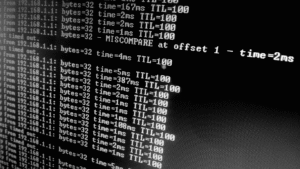Introduction
As organizations increasingly adopt Software as a Service (SaaS) solutions, managing SaaS spend becomes crucial to ensure cost efficiency and maximize value. SaaS applications offer numerous benefits, including flexibility, scalability, and accessibility. However, without proper oversight, SaaS expenses can quickly spiral out of control. This guide aims to provide you with an in-depth understanding of managing SaaS spend, helping you implement strategies to optimize your software investments, reduce waste, and ensure you are only paying for what you need and use.
1. Understanding SaaS Spend
SaaS spend encompasses all expenses related to the subscription-based software services used by an organization. These costs can range from well-known productivity tools to niche applications tailored to specific business needs. Managing these expenditures effectively requires a clear understanding of what SaaS spend includes, common pitfalls, and the potential impact on an organization’s bottom line.
Components of SaaS Spend
- Subscription Costs: Regular fees paid for using SaaS applications, typically on a monthly or annual basis.
- Overage Fees: Charges incurred when usage exceeds the agreed-upon limits of a SaaS plan.
- Integration and Implementation Costs: Expenses associated with integrating SaaS solutions with existing systems or customizing them to meet specific needs.
- Training and Support: Costs for training staff to use new applications and obtaining support when issues arise.
Common Challenges in Managing SaaS Spend
- Lack of Visibility: Difficulty in tracking and managing all the SaaS subscriptions across the organization.
- Unused or Underutilized Licenses: Paying for subscriptions that are not being fully utilized or are completely unused.
- Overlapping Tools: Multiple departments using different tools that serve the same purpose, leading to redundant expenses.
- Shadow IT: Employees purchasing SaaS applications without the knowledge or approval of the IT department, resulting in unmanaged spend and security risks.
2. Strategies for Effective SaaS Spend Management
Managing SaaS spend effectively involves implementing strategies to gain visibility, control costs, and optimize usage. Here are some proven approaches:
Conduct a SaaS Audit
A comprehensive audit is the first step toward managing SaaS spend. This process involves:
- Inventory of All SaaS Applications: Identify all the SaaS applications currently in use across the organization.
- Review of Usage and Licenses: Assess the usage levels of each application and evaluate whether all purchased licenses are necessary.
- Cost Analysis: Calculate the total spend on SaaS applications, including hidden costs such as overage fees or integration expenses.
Centralize SaaS Procurement
Centralizing the procurement process helps prevent unauthorized purchases and ensures all SaaS acquisitions align with the organization’s strategic goals. Benefits include:
- Better Negotiation Power: Consolidating purchases allows for bulk negotiations, potentially leading to discounts.
- Standardized Approval Process: Implementing a standardized process for approving new SaaS tools helps in maintaining consistency and avoiding unnecessary purchases.
Optimize SaaS Licenses
To minimize waste, it’s essential to optimize the use of SaaS licenses:
- Right-sizing Licenses: Regularly review license usage to ensure you are not paying for more than you need.
- Reallocate Unused Licenses: Identify unused licenses and reallocate them to departments or individuals who need them.
Implement SaaS Management Tools
Investing in SaaS management platforms can provide greater visibility into your SaaS spend and usage. Key features of these tools include:
- Automated Discovery: Automatically identify all SaaS applications being used within the organization.
- Usage Analytics: Track usage patterns to identify underutilized applications and make data-driven decisions.
- Renewal Management: Keep track of subscription renewal dates to avoid automatic renewals and negotiate better terms.
3. Best Practices for Managing SaaS Spend
Beyond basic strategies, implementing best practices ensures ongoing optimization of SaaS spend management.
Establish Clear SaaS Policies
Creating and enforcing clear policies around SaaS procurement and usage can prevent overspending and ensure compliance. Key elements of effective policies include:
- Approval Workflows: Define who can approve new SaaS purchases and under what conditions.
- Usage Guidelines: Set guidelines on how SaaS applications should be used, including restrictions on purchasing without IT approval.
Regularly Review and Renew Contracts
Regular contract reviews help ensure your organization is only paying for what it needs:
- Assess Vendor Performance: Regularly evaluate SaaS vendors based on their performance and alignment with your business needs.
- Negotiate Contract Terms: Use data from your SaaS audit to negotiate better terms, such as volume discounts or flexible renewal options.
Foster Collaboration Between IT and Finance
Close collaboration between IT and finance teams can improve SaaS spend management:
- Joint Decision-Making: Ensure both teams are involved in the decision-making process for new SaaS purchases.
- Shared Visibility: Utilize shared dashboards and reports to provide both teams with visibility into SaaS spend and usage.
4. Tools and Solutions for Managing SaaS Spend
Several tools and solutions are available to help organizations manage their SaaS spend more effectively. These tools provide functionalities like cost tracking, usage monitoring, and automated optimization.
Popular SaaS Management Tools
1. Blissfully:
Offers a comprehensive suite of features for managing SaaS subscriptions, including automated workflows and spend analysis.
2. Torii:
Provides visibility into all SaaS applications and offers tools for optimizing spend, managing renewals, and enforcing policies.
3. BetterCloud:
Focuses on improving SaaS security and compliance while providing robust spend management features.
Choosing the Right SaaS Management Tool
When selecting a SaaS management tool, consider the following factors:
- Ease of Use: The tool should be easy for your team to use and integrate seamlessly with your existing systems.
- Feature Set: Ensure the tool provides the features you need, such as automated discovery, usage analytics, and renewal management.
- Scalability: Choose a tool that can scale with your organization as your SaaS portfolio grows.
5. Future Trends in SaaS Spend Management
As the SaaS landscape evolves, new trends are emerging that will shape the future of SaaS spend management. Staying ahead of these trends can help your organization adapt and continue to optimize its SaaS investments.
AI and Machine Learning
Artificial intelligence (AI) and machine learning are increasingly being integrated into SaaS management tools to provide more accurate insights and predictions:
- Predictive Analytics: AI-powered tools can predict future usage patterns and help organizations adjust their SaaS spend proactively.
- Automated Optimization: Machine learning algorithms can automatically identify opportunities for cost savings and optimize license allocations.
Increased Focus on Security and Compliance
As SaaS adoption grows, so does the importance of security and compliance. Managing SaaS spend will increasingly involve:
- Ensuring Data Privacy: Protecting sensitive data stored in SaaS applications and ensuring compliance with regulations such as GDPR or CCPA.
- Vendor Risk Management: Evaluating SaaS vendors for security vulnerabilities and ensuring they adhere to your organization’s security policies.
Expanding Role of FinOps
FinOps, a practice that combines finance and operations, is becoming more relevant in the context of SaaS spend management:
- Cost Transparency: FinOps practices provide greater transparency into SaaS costs and help organizations allocate resources more effectively.
- Continuous Optimization: Adopting a FinOps approach encourages continuous optimization of SaaS spend, ensuring your organization is always getting the best value.
Conclusion
Effectively managing SaaS spend is essential for organizations looking to optimize their software investments and reduce costs. By understanding the components of SaaS spend, implementing strategies for control and optimization, and staying informed about the latest trends and tools, you can ensure your organization is well-positioned to manage its SaaS portfolio effectively. Remember, managing SaaS spend is an ongoing process that requires regular reviews, collaboration across departments, and a proactive approach to cost management. With the right strategies and tools in place, your organization can maximize the value of its SaaS investments and maintain a lean, efficient software stack.
Facts at a Glance:
- SaaS spend includes subscription costs, overage fees, integration expenses, and support costs.
- Common challenges in managing SaaS spend include lack of visibility, unused licenses, overlapping tools, and shadow IT.
- Strategies for managing SaaS spend effectively include conducting audits, centralizing procurement, optimizing licenses, and using SaaS management tools.
- Best practices include establishing clear SaaS policies, regularly reviewing contracts, and fostering collaboration between IT and finance.
- Popular SaaS management tools include Blissfully, Torii, and BetterCloud.
- Future trends in SaaS spend management include AI and machine learning, increased focus on security, and the expanding role of FinOps.
FAQs on Managing SaaS Spend
1. What is SaaS spend management?
SaaS spend management refers to the process of monitoring, controlling, and optimizing the costs associated with subscription-based software services. It involves strategies like conducting audits, centralizing procurement, optimizing licenses, and using management tools to reduce waste and improve efficiency.
2. Why is managing SaaS spend important?
Managing SaaS spend is crucial because it helps organizations avoid unnecessary expenses, optimize their software investments, and ensure that they are only paying for the tools they use. Effective management also mitigates risks associated with shadow IT and security vulnerabilities.
3. What are some common challenges in SaaS spend management?
Common challenges include lack of visibility into SaaS usage and costs, paying for unused or underutilized licenses, overlapping tools across departments, and shadow IT, where employees purchase software without the knowledge or approval of the IT department.
4. How can I optimize my SaaS licenses?
To optimize SaaS licenses, regularly review usage data to identify unused or underutilized licenses. Reallocate these licenses where needed or downgrade or cancel subscriptions that are not providing sufficient value. Implementing a SaaS management tool can help automate this process.
5. What tools can help with managing SaaS spend?
Several tools are designed to help manage SaaS spend, including Blissfully, Torii, and BetterCloud. These tools offer features like automated discovery of SaaS applications, usage analytics, cost tracking, and renewal management.
6. What are the benefits of centralizing SaaS procurement?
Centralizing SaaS procurement helps streamline the purchasing process, prevent unauthorized software purchases, and leverage better negotiation power for bulk purchases. It also ensures all software acquisitions align with the organization’s strategic goals.
7. How can SaaS spend management tools enhance security and compliance?
SaaS spend management tools enhance security and compliance by providing visibility into all SaaS applications being used, monitoring data usage, and ensuring that all software meets the organization’s security standards. They also help in managing vendor risks and compliance with data protection regulations.
8. What are the future trends in SaaS spend management?
Future trends in SaaS spend management include the increased use of AI and machine learning for predictive analytics and automated optimization, a stronger focus on security and compliance, and the expanding role of FinOps for cost transparency and continuous optimization.




